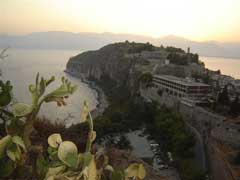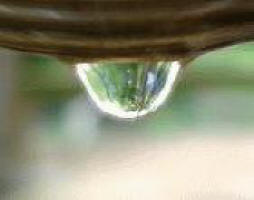 Water scarcity and LIFE - developing good practice in reducing water usage
Water scarcity and LIFE - developing good practice in reducing water usage
The October edition of LIFEnews is focused on the theme of LIFE and water
scarcity. Water scarcity and droughts concern all EU countries, especially
those in the southern Mediterranean region. Climate change is expected to
multiply and intensify these occurrences in the future. In the face of these
challenges, a number of LIFE projects have worked directly or indirectly to
improve the efficiency of water use.
A number of LIFE projects have demonstrated good practice in rationalising
water use to relieve pressure on water resources.
LIFE projects on water scarcity
A number of LIFE projects have worked directly or indirectly to improve performance or demonstrate new best practice in these areas. Several projects have worked to develop new production processes reducing or eliminating the use of water. The project ‘Microfinishing’ ( LIFE02 ENV/IT/000052) developed a new dry process of ceramic finishing that reduced water usage in this previously water-intensive industry to zero.
The project ‘Hagar’ ( LIFE02 ENV/E/000210) developed an effective new system of irrigation, which calculates the real-time water requirements of plants and avoids unnecessary watering of crops. The project achieved a reduction in water usage in twelve pilot fields and trained farmers and technicians in the implementation of the system.
Another recently finished project dedicated to more rational water usage in irrigation was the Optimizagua project in Spain ( LIFE03 ENV/E/000164). It combined innovative technologies with traditional rainwater collection methods to reduce demand on the general water supply (see project article is this edition of LIFEnews).
Preventing water loss from leaks is a key area of concern and the Dropawater project ( LIFE02 ENV/E/000183) checked all water supply pipes in the Spanish city of Ceuta using advanced technology. The project then implemented a “Compact Pipe/Roll Down” technique to repair leaking pipes, which were sheathed in a new polyethylene pipe jacket. The project reduced the daily water usage in the city by nearly 3,000m³.
Similarly, the Rakvere LIFE project ( LIFE00 ENV/EE/000922) introduced a comprehensive monitoring system for its water supply network. The system measures water supply, consumption and flow and detected leaks. It also provided computerised tools which enabled more effective management of the water supply. Water loss was decreased from 37% to 21% and the time taken to detect leaks was decreased from up to six days to within three days.
A project focused on the re-use of water was Aquasave ( LIFE97 ENV/IT/000106). It introduced a system to collect and treat water coming from showers, bathtubs and washbasins (grey water) in a residential building in Bologna. After filtration and disinfection, the water was diverted for use in toilet flushing. It also collected and treated rainwater before sending it to be used in dishwashers and washing machines. These measures reduced demand for drinking water in the building by 20%. Furthermore, the project demonstrated that water-efficient appliances could further reduce consumption by 30%.
Another project looked at the “Reuse of filter backwash water from groundwater treatment for drinking water purposes with a submerged membrane system” ( LIFE98 ENV/D/000509). Standard water filters have to be washed out with fresh water for continued use resulting in dirty waste water. This project demonstrated the feasibility of a large-scale system to recover 99.85% of the water used to clean the filters by micro-filtration.
Whilst most of these projects are aimed at reducing water usage without
changing consumption patterns, the LIFE project “Zaragoza, the Water-saving
City” (
LIFE96 ENV/E/000509) did attempt to change the water consumption
habits of the local population. It implemented a massive information
campaign on water saving using a full range of information and promotional
tools. It doubled the number of households engaged in water-saving measures,
enabling the saving of 1.2 thousand million litres of water in 1998. It also
encouraged more than 140 companies to market water-saving products.
Each of these LIFE projects demonstrates an effective method for
improving the efficiency of water usage. Each of them thus makes a
contribution to efforts to respond to the challenge posed by water scarcity
and droughts. They show both policy-makers and practitioners what it is
possible to do and the results that can be achieved.
| Contact information | n/a |
|---|---|
| News type | Inbrief |
| File link |
http://ec.europa.eu/environment/life/themes/water/features2007/scarcity.htm#waterscarcity |
| Source of information | EC - LIFE |
| Keyword(s) | EU-LIFE, water scarcity |
| Subject(s) | DRINKING WATER AND SANITATION : COMMON PROCESSES OF PURIFICATION AND TREATMENT , POLICY-WATER POLICY AND WATER MANAGEMENT , RISKS AND CLIMATOLOGY , SANITATION -STRICT PURIFICATION PROCESSES |
| Relation | http://www.semide.net/topics/WaterScarcity |
| Geographical coverage | EU |
| News date | 30/10/2007 |
| Working language(s) | ENGLISH |
 you are not logged in
you are not logged in





